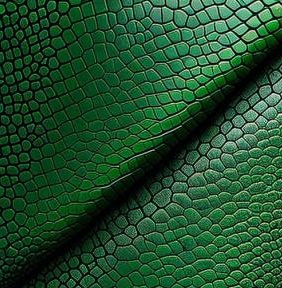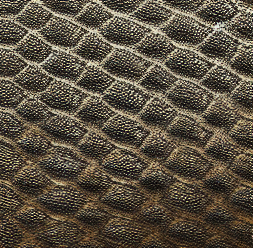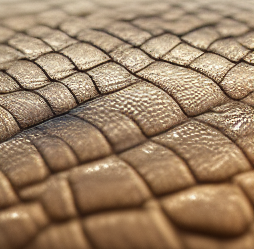What is the difference between alligator and crocodile leather?
Croc vs. Gator: Showdown of Luxurious Leathers
Introduction:
Imagine you’re on a jungle adventure, quietly paddling down a swamp in a canoe. As you glide through the muddy water, you spot a pair of eyes poking up along the shore. Could it be…a crocodile? Or maybe an alligator? Even experienced explorers can find these creatures tough to tell apart. But experts who make luxurious leather goods know there are big differences between gators and crocs. In this adventure story, we’ll explore what makes each of these cool reptiles unique. Get ready for a wild ride!

Home Sweet Home
American alligators are the rockstars of gator leather. These semiaquatic superstars like to spend time both in and out of the water. They build burrows for shelter in the freshwater marshes and swamps of the southeastern United States.
Meanwhile, crocodile leather comes from many different species all over the world. The Nile crocodile is especially popular, slithering through lakes, rivers, and marshes across Africa, Asia, and Australia.
Because alligators and crocodiles live in such different habitats, the leathers they produce are not the same. Let’s see how!


Beauty and the Beasts
Now imagine leaning over the side of your canoe to get a closer look. An alligator floats by, its back covered in bumpy scales called osteoderms. These bony plates give gator skin a cool pebbled texture. Each oval osteoderm is pretty big – about the size of a kidney bean! They cover the gator’s back in neat rows and columns.
A crocodile creeps by next. Its back is also covered in osteoderms, but they’re much smaller. Tons of these bean-sized and speck-sized scales cluster together in funky shapes. This makes croc skin look more lumpy and irregular than the neat pebble pattern of gators.
If you ran your fingers across them, you’d find gator skin thick and sturdy with deep grooves. Croc skin feels more flexible and smooth in comparison, despite the bumps. Which do you think would make better leather products?
Survival of the Toughest
After feeling the difference, you might guess alligator leather is more heavy duty. And you’re right! Those big osteoderm plates give gator skin a super thick and protective armor. This makes it incredibly durable for leather goods like boots, bags, and belts. With proper care, gator leather items can last for decades without cracking or wearing out!
Croc skin is suppler and more delicate. Products made from crocodile leather tend to show scratches and scuffs over time. So gator leather is the clear winner when it comes to toughness and longevity.
But crocodiles don’t go down without a fight. Their resilience shows in how long they’ve thrived on Earth – over 200 million years! Pretty impressive compared to gators who have only been around for about 35 million years.

Playing Fair and Square
As we admire these magnificent beasts, it’s important to consider where leather comes from. Wild alligator populations are closely monitored in the U.S. Strict regulations control legal gator hunting and harvesting. This helps keep ecosystems balanced and prevents overhunting.
Crocodile protection varies more around the world. Some areas have excellent management while others need improvement. Consumers should look for ethical brands that follow fair guidelines for sustainability. Supporting these companies helps local economies and preserves croc species for the future.

Crafting the Couture
Skilled craftspeople are needed to turn tough gator and croc skins into luxurious leather goods. Tanning and working with these materials is an art form! Leatherworkers must be precise to maintain each hide’s unique beauty.
One mistake can damage the rare pearly scales of a crocodile. But patience and care reveal gorgeous patterns in the finished leather. Fashion designers can highlight these elegant textures in handbags, shoes, and accessories.
Alligator artisans also nurture the skins with meticulous care. The embossed pebble pattern must stay intact during tanning to achieve that lavish gator look. This expertise elevates fine leathers into wearable luxury.
Snapshot from the Swamp
As we conclude our croc versus gator adventure, let’s recap their cool differences:
Alligators – Found in the U.S., chunky osteoderms form neat pebbled skin, extremely durable and rugged.
Crocodiles – Worldwide species, small and large scales make an irregular bumpy pattern, smoother and more flexible.
Both – Require skillful craftsmanship for tanning, make superb leathers for designers, and deserve ethical care as endangered reptiles.
Which is your favorite leather and why? Maybe you prefer the exoticism of crocodile or the hardy durability of alligator. We’ve explored how habitat, anatomy, and crafting distinguish these two awesome animals. One thing’s for sure – we have immense respect for these iconic creatures of the swamp!
